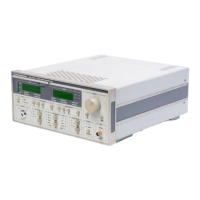Lf
you are not sure of the path level of
a
command, refer to the LDC-3700
Series
Laser Diode Controller Command
Path Structure hagram, Figure
4.2.
For ttus discussion, the root level is the
highest
level, and moving down the
diagram (Figure 4.2) decreases the level.
Once the software
has
"walked" to
a
lower path level, it remains at that level when it receives the next command.
For example, to
(1)
set the LASER display to show the set point,
(2)
decrement the set point, and
(3)
set
the
TEC
&splay to show the measured temperature, the following command
string
could
be
used:
"LAS:DIS:SET; DEC; TEC:DIS:Tw
When the "DEC" command is reached, the software is at the "LAS:DIS:" level. Since there is no "DEC" command
there, it walks back up to the "LAS" level, and there it finds the "LAS:DECn command.
The reason that the full path (including "TEC:") must
be
specifiied
for the last
part
(TEC:DIS:T) is that otherwise it
would look for the DIS:T command in the LAS:DIS:
path,
not find
it,
and generate error
E-123.
After the second semicolon is reached (DEC;) the software
will
first
look
for the next word
(TEC)
at the current
path. Since it is not found it
will
walk back up the
tree
until
it finds it at the root level.
Once
the search
walks
up to
the root level, it will not walk down any other
paths,
unless the
path
is
speclfied.
The only exception to the rule described above is when common commands
are
used.
In
that
case,
the software
remembers which level
the
user
was
at before the common command
was
found, and it
returns
to that
same
level
after finding and executing the common command. Therefore the following command string is legal:
"TEC:DIS:T;
*WAI;
DEC"
Here, (1) the display is set to show the measured temperature
(2)
the software
waits
for the previous command to
be
executed, and
(3)
the set point is decremented one
step.
3.5.2
Timing Considerations
Although the shortcuts mentioned in Section 3.5.1 reduce the command length, they may not necessarily optimize
the
speed
of program execution. The following tip
may
be useful
if
speed
of execution of a command is
critical.
If
a
command follows
a
semicolon
(;)
in
a
command
string,
and it is not at the root level, using the colon
(:)
will
aid
the software
in
locating the command, and time
will
be
saved.
For example, the following command string
will
execute slightly faster (as shown)
than
it would
if
the
Grst
colon
(:)
after the second semicolon
(;)
was
not included. Th~s would save the time of two
binary
searches, one at the
LAS:DEC level and one at the LAS: level.
"LAS:DIS:SET; DEC; :TEC:DIS:TW
In
other
cases,
the hardware
may
not
be
able to react as quickly as the commands
are
executed. For example,
if
the
set point
is
greatly incremented (i.e. by
10
"C)
and
a
measurement is taken before that new set-point temperature
has
been
reached,
a
decision
based
on the accuracy of the measured value
may
not produce the desired reaction.
In
other words, the test could
be
invalid due to a premature measurement. For
cases
like this, the
*WAI
command is
useful.
The
*
WAI
command
will
suspend the execution
of
the next command
until
the previous command
has
been
completed.
Artisan Technology Group - Quality Instrumentation ... Guaranteed | (888) 88-SOURCE | www.artisantg.com

